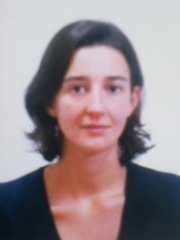Religion and Reconciliation in Global Perspective, Oct. 28, 2014: Positive and Radical Reconciliation
by Lea Levy
 Dr. Charles Villa-Vicencio was, much like Dr. Alan Boesak, a very eloquent speaker. Though they grew up on different sides of the conflict, they had both been very involved in the struggle for human rights in South Africa, and are still fighting hard to create a reality of justice throughout the world.
Dr. Charles Villa-Vicencio was, much like Dr. Alan Boesak, a very eloquent speaker. Though they grew up on different sides of the conflict, they had both been very involved in the struggle for human rights in South Africa, and are still fighting hard to create a reality of justice throughout the world.
Villa-Vicencio believes that full reconciliation takes several steps; negative peace, negative reconciliation, and finally, positive reconciliation. Negative peace is simply a cease-fire, and a commitment to political coexistence. It does not include reconciliation because there is no obligatory dialogue between the people, and they are not forced to respect and understand each other, simply to coexist. In negative reconciliation, there is again no violence, but there is still not a lot of dialogue. There is argument instead of fighting. There is scapegoating instead of reconciliation. Finally, positive reconciliation is the development of processes to deal with the trauma. The government must create institutions, such as the Truth and Reconciliation Commission, to deal with the past and to make reparations. The end product is the achievement of the Kingdom of G-d, a supreme peace throughout the land and an achievement of unity in the midst of diversity. Though South Africa has made reparations and have reconciled across the black and white divide, there is still a legacy of racism and many economic problems. Villa-Vicencio believes that South Africa has settled for what is easy, and has failed to keep its eyes on the goal.
Boesak agrees that South Africans have failed to keep their eyes on the goal, and that they are settling. His definition of positive reconciliation is radical reconciliation; a reconciliation that is intricately tied to justice, and restitution of hope, and religion can play a very positive or a very detrimental role in this process.